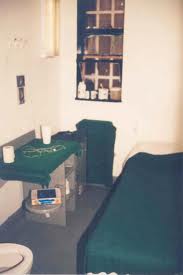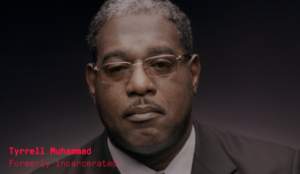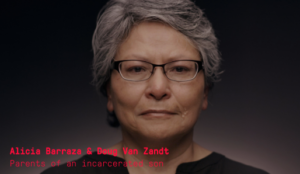On Tuesday, June 12, by a vote of 99 – 45, the New York State Assembly passed the Humane Alternatives to Long Term (HALT) Solitary Confinement Act (A.3080B-Aubry / S.4784A-Parker). The announcement from the Speaker that the bill had passed was greeted with cheers and applause from CAIC members in attendance in the Assembly gallery.
In comments made from the Assembly floor preceding the vote, lead sponsor Jeffrion Aubry of District 35 in Queens made it clear why the reforms in the bill are so urgently needed: “Solitary confinement has been identified by the United Nations as torture under the Mandela Rules. Inmates in SHUs are locked into their cells 23 hours a day with one hour of recreation time in an outdoor cage. They get no phone calls, no personal property, no programming, no religious services and there are no legal limits to how long they can be kept. Some prisoners have been in SHU for decades.”
“What we are doing with the bill,” Aubry explained to his fellow Assemblymembers, “is saying to the state, saying to our population, saying to the people who are incarcerated that we have heard you. Many of them have been to see you in your offices who have suffered from this. They have asked for relief for those who they have left behind. It is but right and good that we enact this bill.”
The #HALTsolitary campaign, which has long engaged in organizing, education, and advocacy to get the bill enacted into law, issued the following statement:
“The #HALTsolitary campaign applauds Speaker Carl Heastie, lead Assembly sponsor Jeffrion Aubry, and the New York State Assembly for passing legislation to end the torture of solitary confinement and replace it with more humane and effective alternatives. Thousands of people remain in solitary confinement in New York’s prisons and jails each day, isolated 22 to 24 hours a day in a cell without any meaningful human contact or programs, often for months, years, and even decades. They are disproportionately Black and Latinx people, young people, gender non-conforming people, and people with mental illness, often held in isolation for non-violent infractions or even for speaking out about abuse by staff. If the State Senate fails to act to end this racist and destructive practice this session, as appears likely even though HALT has 25 co-sponsors in that house, Governor Cuomo must implement the reforms we seek administratively.”
Referring to the fact that Governor Cuomo could at any time write most of the measures in the HALT Bill into law through executive action, Aubry exhorted his colleagues to take a definitive stand: “The executive [branch] could have ended this immediately. They could have looked at the history of SHUs [Special Housing Unit, aka solitary confinement] and immediately taken the action to stop the process. Looked at what’s going on in the world and stopped the process. But they haven’t. Not just this administration, but administrations in the past. Sometimes we as legislators have to step up to the plate and say what is right is right.”
Despite strong support for HALT in the State Senate, the bill was not brought to the floor for a vote before the end of session in late June.
Meanwhile, Governor Cuomo and NYS Commissioner of Corrections Anthony Annucci have both ignored multiple invitations from CAIC to spend 24 hours in a solitary confinement cell, as the Corrections Commissioner of Colorado did before implementing major reforms.
#HALTsolitary Confinement Act Passes in the NY State Assembly – SEE THE FULL 9-MINUTE VIDEO:

 by Victoria Law. Excerpted from
by Victoria Law. Excerpted from 
 “We Are Witnesses”
“We Are Witnesses” “He wasn’t a bad kid. He was just a kid that was mentally ill.”
“He wasn’t a bad kid. He was just a kid that was mentally ill.” 

 Benjamin Van Zandt’s hellish odyssey through New York’s criminal justice system began when the voices inside his head compelled him to light a neighbor’s house on fire.
Benjamin Van Zandt’s hellish odyssey through New York’s criminal justice system began when the voices inside his head compelled him to light a neighbor’s house on fire.
Follow the #HALTsolitary Campaign